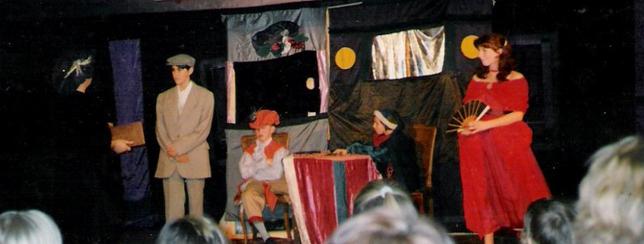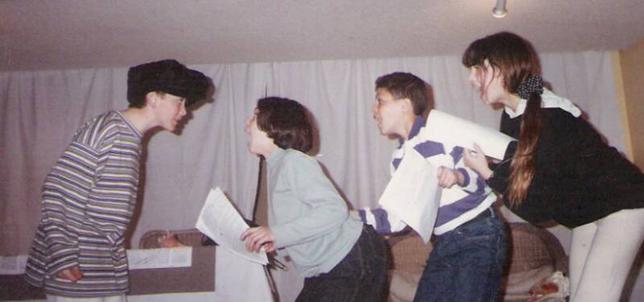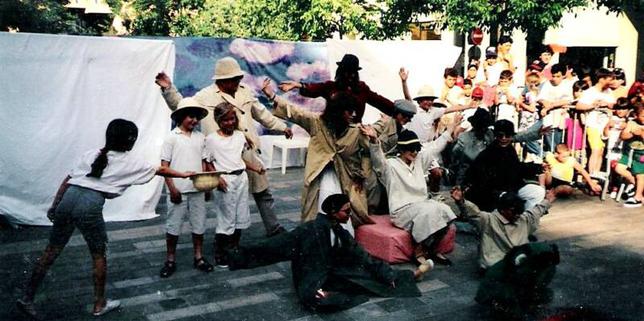The Rehearsals
Place the responsibility on the students from the start, so it's their project.
Ask if they think they're ready to work on a performance, if they can follow the rules and work together. For older children, ask who would be available for extra jobs such as prop manager, costumes, sound, lighting.... Ask them when they think the best date would be. Have one already in your head and guide the debate to where you want it to go. Once you have set a date for the performance slowly turn the class into full rehearsals. Deadlines are a wonderful thing; they push a person to the limit and, once reached, fills one with a sense of achievement. Maybe the best feeling of all is achieving a goal.
Some students prefer not to be onstage, and they can choose stage manager, prop, costumes, lighting or sound.
Sometimes they are just self-conscious or shy. I'll have them try out characters that are completely opposite, when shy Veronica becomes Lady Veronica. The transformation can be impressive.
Rules
Establish complete silence before the students "onstage" begin their scene. Raise your hand and say: Silence.
Once and quietly.
It may take a minute before the class is completely still. When they see you with your hand raised they'll settle. When it's completely quiet say: Ready........
.....Action! Bring the hand down sharply. The students can say it with you. They know to wait until the hand goes down.
The Script
If it's an informal performance I allow students to keep their scripts with them. The scripts should be in a folder, and no scribbling on them. Have copies in class.
Choreography
Once all the scenes have been rehearsed several times, put the scripts down and go through the paces in the performance without speaking. How many steps to where you want to go?
The students in the audience help find the best positions for the actors - the general composition - so the movements flow. This includes pauses, so very important.
Film
Film the improvisations and rehearsals which can be helpful when students see themselves, and to have a good amount of images that can be edited. Older students can film as well.
Sets
For a classroom, foldable panels for the backdrop placed on a long table can solve the problem simply.
You can decorate them any way and put holes for puppets. For another scene you can cover them with fabric.
Otherwise my favorite solution for a performance, which makes storage and transportation easy,
is to cover garment racks with fabric. You can make them higher or longer with poles.
Place two to four side by side as the backdrop, or in such a way that the actors can pass through.
Have an extra one with the wheels on to move across the stage. Once we used it for a pastoral
scene with two actors surrounded by flowers and birds.
You can put two scenes on one rack, one on either side, just turn it around. The change of scenery should be in itself a choreography. My changers wore tuxedos.
I also used the racks as windows or for puppet theatre. The chorus in Carmen was performed by a group of jealous female snakes popping through holes. Anything is possible with this method.
As the date nears push students to their maximum. At the same time make sure they know it’s not the end of the world if there’s a mistake during the performance. Tell them to hope for the best and expect the worst - something will most likely happen not as planned. Improvise, enjoy yourself while you’re onstage.
Sometimes the mistake is the best part of the performance.
A performance is always exciting. Either with a large group or with a child and a parent, it's fun to put on a show. It is also an excellent way to improve language skills.
Students learn how to present themselves, exploit their creative talents, work as a team, and strive for perfection.
On this page are tips on how to make the experience of a performance, rehearsals and so forth, pleasant yet disciplined.
The objective is to maximize creativity without the anarchy.
THE PERFORMANCE
Sophia Antipolis, France



